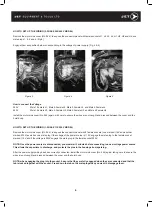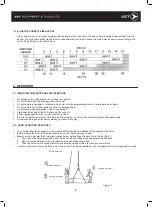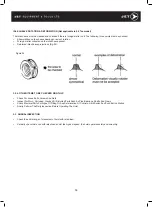
10
2.3. SLINGING
2.3.1. CHECK LIFTING SLINGS
• Never use any lifting sling underrated for the load being lifted. Never use any lifting sling inferior in quality or condition.
2.3.2. SAFE AND SURE SLINGINGS
Note: The load capacity of the sling should always be rated higher than the load being lifted.
Always ensure the sling is not improperly hooked as shown in Fig.12~14.
Fig.12, Always ensure the sling is located in the hook properly
Fig.13, Sling the load up with the ANGLE BEING 60° OR LESS.
Fig.14, ENSURE THE HOOK LATCH IS CLOSED CORRECTLY.
THE LOAD CHAIN SHOULD NOT BE WRAPPED AROUND THE LOAD (Fig. 15)
3. INSPECTION & MAINTENANCE
Inspection procedures are divided into 3 general classifications based upon the service intervals. Deficiencies should be carefully
examined and corrected. The intervals between inspection will vary depending on the operating conditions.
3.1. DAILY INSPECTION
Inspect the following items daily before operating hoist.
3.1.1. TOP HOOK & PARTS
• Check the hook latch to ensure it is opening and closing properly
• Inspect the top hook and parts for flaws or deformations that are visibly noticeable
• Ensure the idle sheave, where applicable, rotates smoothly (Check to ensure it fits the load chain correctly)
• Inspect for any loose or missing parts
3.1.2. LOWER HOOK & PARTS
• Check the hook latch to ensure it is opening and closing properly
• Ensure the bottom hook is rotating smoothly
• Inspect the top hook and parts for flaws or deformations that are visibly noticeable
• Where there are two or more load chain falls, check to ensure the idle sheaves rotate smoothly
• Do they fit the load chain correctly?
• Inspect for any loose or missing parts
Figure 12
Figure 13
Figure 14
Figure 15

























